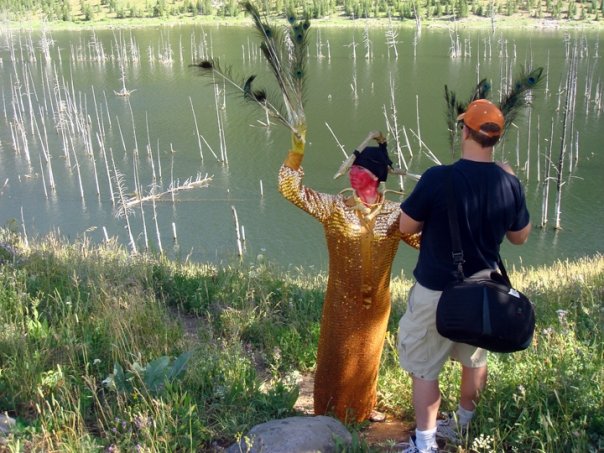
Goatsilk describes a real material we first read about in a New York Times Magazine article in 2002. The writer told the story of scientists researching a unique way to mass produce spider silk – useful because of its combination of extreme strength and light weight. The particular gene that allows a spider to make silk is spliced into the goat’s genome, combining with the gene that causes the goat to produce milk. The result of this genetic collage is a goat whose milk contains proteins that can be strained and spun into spider silk.
A creative solution to a practical problem, this idea also struck us as a strange portent of some future world. What if someday, instead of mining metals from the earth with big drills, we were able to harvest an equivalent material from animals grazing in a meadow? Attractive yet frightening, this unfolding possibility transformed the way we saw the world, much in the way art does.
Beyond what it describes, we were drawn also to the plain poetics of the word Goatsilk. At first glance it looks mysterious, almost like a foreign word. The first half of the word describes a coarse animal, the latter half a refined fabric. So much of the world’s beauty is charged by this kind of tense coupling.
Goatsilk was formed in 2002 as a gallery space on the outskirts of Missoula, MT. As a creative force, it has changed forms many times since then, finding outlets in street performance, independent movie theaters, galleries, universities and museums. An expanding variety of creative minds collaborate in Goatsilk projects, including computers programmers, actors, writers and other artists. In the midst of all this morphing, we find we keep returning to the internet as the place where art and audience seem most alive, where desire and possibility shake out most truly.
—Ben Bloch and Caroline Peters
